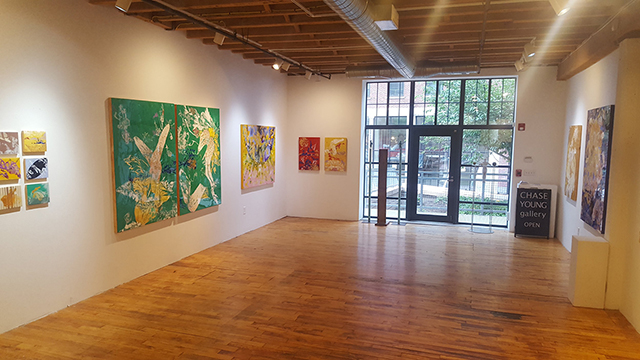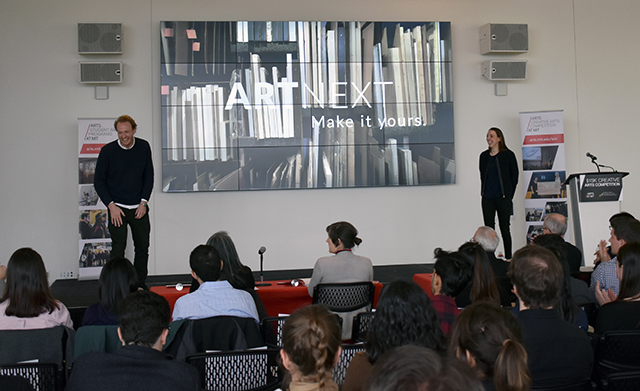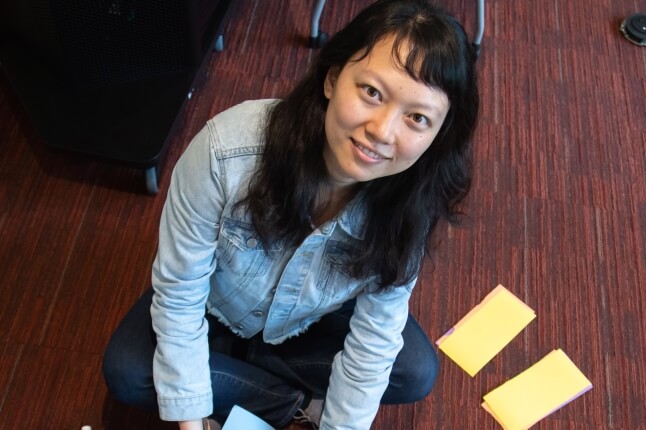News
Recent graduate Julian Siegelmann launched artnext, a service aimed at making art ownership accessible for more people, while helping galleries increase the odds of selling artwork and raise revenue from unused artwork in storage. (Photo provided by Julian Siegelmann)
The Museum of Modern Art in New York City has nearly 200,000 works in its collection, but only a small fraction are on display. The bulk of Picasso’s cubist canvases and Miró’s surrealist sketches are locked away in storage.
Commercial galleries that face even tighter space constraints than massive museums like the MoMA are also forced to stow much artwork. But storing art directly impacts these small businesses’ bottom line—they can’t sell what potential buyers can’t see.
“A lot of galleries want to do more with their artwork, but they can’t because they are hamstrung from a financial and a human resources standpoint,” said Julian Siegelmann, M.D.E. ’19, who learned about this issue while writing his thesis for the Master in Design Engineering program, a joint program offered by the Harvard John A. Paulson School of Engineering and Applied Sciences and the Graduate School of Design. “Galleries often have only two or three employees, many of whom only work part time.”
Building off that thesis, Siegelmann launched artnext, a service aimed at making art ownership accessible for more people, while helping galleries increase the odds of selling artwork and raise revenue from unused artwork in storage.
Instead of having to commit to the purchase of a piece of art on the spot, individuals can take it home for three, six, or 12 months for an $85 monthly fee that includes delivery, installation, and pickup. If that user decides to buy the artwork, monthly fees already paid are applied toward the purchase price.

The interior of Boston's Chase Young Gallery with artwork by YoAhn Han. (Photo provided by Julian Siegelmann)
Encouraging individuals to purchase art is no easy task, said Siegelmann, whose mother is an artist. Typically, out of 100 people who attend a gallery exhibition, only one person makes a purchase. Dozens of exhibition attendees may be interested in art, but don’t buy due to cost or lack of information.
“Ultimately, the reason most people don’t buy artwork is that they don’t feel empowered to make that decision,” he said. “There is this perception of art as an investment in the art world that bars many people from participating in what should be a preference-driven market. Many galleries that I’ve spoken to have an easier time selling a $50,000 piece than a $5,000 piece. This hurts many artists and gallerists, and keeps out many individuals who would otherwise be interested in having art on their walls.”
The artnext platform seeks to remove those barriers. Users can express preferences and then receive a set of recommendations, helping those who may feel intimidated by the sheer number and variety of choices.
The art world’s long history and traditionalism will likely present the biggest challenges for artnext, Siegelmann said. It will be difficult to shift the mindsets of both gallery owners and customers to think about art as something you pay to access, rather than own.
“It’s really about facilitating a connection between patrons of the art, artists, and gallerists,” he said.
He’s confident that once users experience having art on their walls for a fraction of the purchase price, they’ll see the value.
As the startup moves forward, Siegelmann is relying on the lessons he learned in the MDE program, which emphasizes pragmatic solutions for real-world problems. The program also provides mentorship and support to students seeking practical applications for their intensive, collaborative projects.
“Having done this as my thesis, I thought I was perfectly prepared to launch this startup,” he said. “But I’ve learned that you have to be very close to your customer, and iterate, and be unafraid of failure. This process has been both humbling and exciting.”

Siegelmann pitches artnext at MIT's Creative Arts Entrepreneurship Challenge, where the startup placed third. (Photo provided by Julian Siegelmann)
And for Siegelmann, that excitement is mounting. Artnext will partner with the Chase Young Gallery in Boston to celebrate its launch at a special exhibition on Aug. 2.
Siegelmann plans to continue meeting with advisors and potential investors and eventually make the move to New York City, home to 1,500 galleries. He and his team will keep refining the platform, based on customer feedback, as they scale-up.
“The problem we are trying to solve, by providing more access to art, is something that a lot of people care deeply about. Art is a really emotional topic. A lot of artists feel disenfranchised by the art market, and that creates a lot of friction between artists and galleries,” he said. “It is really rewarding to be able to help both artists and gallerists make more of a living and start to disentangle a market that has been stuck doing things the same way for hundreds of years.”
Topics: Design, Entrepreneurship
Cutting-edge science delivered direct to your inbox.
Join the Harvard SEAS mailing list.
Press Contact
Adam Zewe | 617-496-5878 | azewe@seas.harvard.edu



